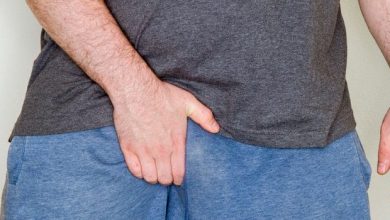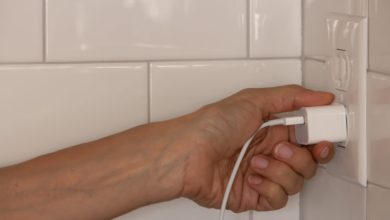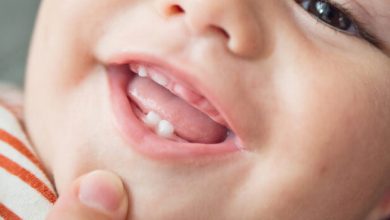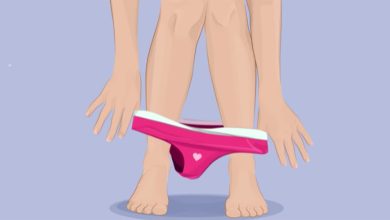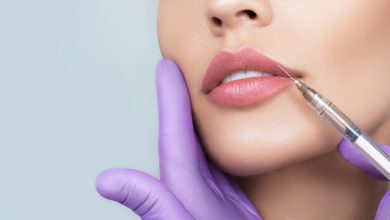Drinking Water On An Empty Stomach: Japanese Water Therapy, What Science Says and More
What if the secret to better health, glowing skin, and boundless energy was as simple as drinking water first thing in the morning—on an empty stomach? That’s the idea behind Japanese Water Therapy, an ancient wellness practice that’s all about kickstarting your day with hydration in its purest form.
In recent years, water-based wellness trends have gained global attention, from detox drinks to infused waters, each promising unique health benefits. Among them, Japanese Water Therapy stands out for its simplicity and deep cultural roots, inspiring people worldwide to rethink how they hydrate.
Forget fancy diets or complex routines—this is about something so simple, yet so powerful. By drinking water on an empty stomach, proponents of Japanese Water Therapy believe you can supercharge your metabolism, detoxify your system, and even prevent common health issues.
So, is it a health miracle or just another wellness trend? Let’s dive into the tradition, the science, and the simple steps that have made this practice a favorite for generations.
Why Water Matters: The Foundation of Good Health
Your body is about 60% water, making hydration essential for almost every function it performs.
Drinking enough water helps:
- Energize muscles for peak performance.
- Support kidney function by flushing out waste and toxins.
- Promote healthy digestion and maintain regular bowel movements.
- Enhance skin health, giving you that sought-after glow.
- Control calorie intake by substituting sugary drinks and helping you feel fuller for longer. (1)
The benefits of proper hydration are clear, but how you hydrate might make all the difference.
The Morning Hydration Trend
For many, mornings begin with a warm cup of lemon water to kick-start the day, and for good reason—its benefits are well-documented. But Japanese Water Therapy takes this idea further, emphasizing pure water as the ultimate morning elixir.
The concept of starting the day with water isn’t unique to Japan. Ancient Ayurvedic traditions also highlight the importance of morning hydration for cleansing the body and stimulating digestion.
In this article, we’ll delve into the specifics of Japanese Water Therapy, explore its roots in wellness traditions, and compare it to Ayurvedic practices. Most importantly, we’ll assess whether these claims hold up under scientific scrutiny.
What Is Japanese Water Therapy?
Japanese Water Therapy is said to be a long-standing wellness tradition in Japan, where it’s claimed to offer natural remedies for a wide range of health conditions. Advocates suggest it has been used for generations to address issues as minor as headaches and as serious as cancer.
According to these claims, the therapy can reportedly help with conditions such as:
- Diabetes
- Gastritis
- Headaches
- Asthma and bronchitis
- Arthritis
- Epilepsy
- Heart problems
- Tuberculosis
- Digestive issues like constipation, diarrhea, and hemorrhoids
- Kidney and urinary diseases
- Eye, ear, nose, and throat disorders
- Uterine and menstrual problems
- Even cancer
While these assertions are popularized by various websites, it’s essential to approach them critically, as the evidence supporting such claims is lacking.
How Is Japanese Water Therapy Performed?
The steps for practicing Japanese Water Therapy are straightforward and designed to be done first thing in the morning. Here’s how it’s typically performed:
Drink Water Before Anything Else
- Immediately after waking up, drink 640 ml (about 4 glasses of 160 ml each) of water.
- The water should ideally be free of fluoride and slightly warm—not cold or room temperature.
Brush and Wait
- Brush your teeth and clean your mouth, but avoid eating or drinking anything for the next 45 minutes.
Eat Breakfast Normally
- After the waiting period, eat your breakfast as you normally would.
Pause Post-Meal
- Once you’ve had breakfast, don’t consume any food or drink for at least two hours.
This routine aligns with some broader Eastern traditions, where warm drinks like tea are preferred during meals to support digestion.
How Often Should You Drink Water on an Empty Stomach?
Japanese Water Therapy isn’t a one-time fix; it’s intended to be practiced regularly. Specific time frames are suggested for different conditions:
- High blood pressure: 30 days
- Diabetes: 30 days
- Gastritis: 10 days
- Constipation: 10 days
- Tuberculosis: 90 days
- Cancer: 180 days
For arthritis sufferers, the therapy is more gradual: it should be performed for only three days in the first week before progressing to daily practice.
If drinking 640 ml of water first thing in the morning feels overwhelming, it’s recommended to start small and increase gradually until reaching the full amount.
Is There Any Research to Support Japanese Water Therapy?
Currently, there is no scientific research to substantiate the health claims associated with Japanese Water Therapy. While proper hydration is undoubtedly beneficial for overall health, many of the conditions this therapy is claimed to treat—such as cancer or tuberculosis—are serious and require advanced medical interventions.
Claiming that water alone can cure such conditions is not only misleading but potentially harmful. For instance, cancer patients might be given false hope when what they truly need is evidence-based medical care.
While the routine of drinking water on an empty stomach is a healthy practice, it’s important to separate its proven benefits—like hydration and aiding digestion—from unverified claims. For most people, Japanese Water Therapy can be a great way to stay mindful about hydration, but it should not replace conventional treatment for medical conditions.
By keeping these considerations in mind, you can incorporate elements of this tradition into your routine for its hydration benefits—while staying grounded in evidence-based health practices.
A Similar Tradition in India: Usha Paana Chikitsa
Did you know that Japan isn’t the only place where drinking water on an empty stomach is celebrated as a health ritual? In India, a similar tradition rooted in Ayurveda, called Usha Paana Chikitsa, takes hydration to another level—literally.
In Sanskrit, Usha Paana Chikitsa translates to “early morning water treatment,” and it shares the same fundamental idea as Japanese Water Therapy: kickstarting your day by drinking water before anything else. But there’s a key difference: the Ayurvedic version recommends a whopping 1.5 liters of water—that’s about 6 to 7 glasses—all on an empty stomach!
How Does Usha Paana Chikitsa Work?
While the details vary slightly, the practice in India often includes the following steps:
First Thing in the Morning: Upon waking, drink 1.5 liters of lukewarm or room-temperature water. Unlike the Japanese tradition, which suggests smaller amounts, this practice emphasizes quantity.
Avoid Food and Drink: Like Japanese Water Therapy, you’re advised not to eat or drink anything for a set period after consuming the water.
Mindful Hydration: Ayurveda encourages a slow and mindful approach. Instead of gulping the water all at once, it’s recommended to sip it steadily over a short time.
This larger water intake is believed to cleanse the digestive system, stimulate metabolism, and flush out toxins—aligning with Ayurveda’s holistic view of health.
Why 1.5 Liters?
The Ayurvedic perspective holds that drinking a significant amount of water in the morning can “rinse” the internal organs and prepare the digestive system for the day ahead. The emphasis on drinking 1.5 liters may stem from the belief that this volume is enough to fully hydrate the body and stimulate all major systems, including:
- Digestion: Kickstarting the metabolism and promoting smoother bowel movements.
- Detoxification: Flushing out toxins built up overnight.
- Skin Health: Helping with hydration for a natural glow.
While this quantity might feel excessive, proponents argue that the body adapts over time, making it easier to consume the recommended amount.
Does Science Back It Up?
Like Japanese Water Therapy, there’s no scientific evidence to support the specific claims of Usha Paana Chikitsa. While hydration undeniably plays a critical role in overall health, there’s no proof that drinking such large quantities of water first thing in the morning offers unique benefits beyond staying hydrated throughout the day.
In fact, drinking too much water at once can have downsides, particularly for those with kidney issues or electrolyte imbalances. Overhydration (or water intoxication) can dilute the body’s sodium levels, potentially leading to health problems in extreme cases.
That said, many people swear by this practice for its perceived benefits, ranging from improved digestion to increased energy levels.
Why Drinking Too Much Water Can Be Harmful?
While staying hydrated is essential for good health, there is such a thing as too much of a good thing. Critics of practices like Indian water therapy, which involves consuming large amounts of water quickly, warn about the potential risks of overhydration.
Here’s why drinking excessive water can sometimes do more harm than good:
1. Your Kidneys Have Limits
Your kidneys can only process about 800 to 1,000 ml of water per hour. When you drink water faster than your body can handle, it can lead to complications. The excess water essentially overwhelms your system, leaving your kidneys unable to keep up.
2. The Risk of Hyponatremia (Water Intoxication)
Drinking too much water can lead to hyponatremia, a condition where sodium levels in your bloodstream become dangerously low. Sodium is critical for maintaining the balance of fluids inside and outside your cells, and when it’s diluted by excessive water, complications can arise.
At mild levels, hyponatremia may cause symptoms such as nausea, confusion, or headache, which are often overlooked. However, if your kidneys cannot process the excess water, sodium levels can drop rapidly, resulting in severe and life-threatening effects such as seizures, coma, or even death.
According to experts from the Mayo Clinic, hyponatremia can result from underlying medical conditions or consuming water faster than your body can handle. (2)
Recognizing early symptoms like confusion or nausea is crucial to prevent the condition from escalating into a medical emergency. (2, 3)
3. Early Symptoms Are Often Overlooked
A study from 2003 highlighted that fatal water intoxication isn’t well-recognized in the medical literature, partly because early symptoms can be mild and non-specific. These include:
- Confusion
- Nausea and vomiting
- Changes in mental state
Recognizing these signs early is crucial to prevent severe complications, as the condition can escalate quickly. (4)
Over-consuming water is a rare cause of death. In milder cases, it might only lead to symptoms like headaches, confusion, nausea, and vomiting. However, drinking excessive amounts of water is not a miracle cure and cannot solve serious conditions like arthritis, diabetes, or cancer.
4. Overhydration Doesn’t Equal a Cure-All
Drinking too much water won’t magically cure serious conditions like arthritis, diabetes, or cancer. While water is undoubtedly vital for overall health, overconsumption won’t deliver superhuman benefits. In fact, excessive intake can cause headaches, nausea, and confusion, far outweighing any perceived advantages.
5. How Much Water Is Right for You?
While we’ve all heard the “8 glasses a day” rule, the truth is that hydration needs vary based on factors like your health, activity level, and environment. (5)
Some people may need more water, while others may need less. It’s important to listen to your body and drink water as needed, rather than following rigid guidelines.
The Bottom Line
Hydration is critical, but balance is key. Drinking too much water can be just as harmful as not drinking enough. Overhydration is rare but can have serious consequences if ignored. Instead of focusing on extremes, aim to stay hydrated throughout the day in amounts that suit your body and lifestyle.
Water is vital, but it’s not a miracle cure-all. Use it wisely, enjoy its benefits, and remember that moderation is the safest and healthiest approach.



